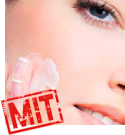MYTH: Phthalates can be found anywhere, including food additives and cosmetics
 Food additives: The EU legislation prohibits any use of phthalates as food additives. However, phthalates may be used in the plastics which are permitted for food contact applications, provided that they must satisfy the migration conditions as laid down by the European law. Their use is of secondary importance in practice and it is limited to such applications as various types of plastic films which are employed in packaging fat-free food-stuffs.
Food additives: The EU legislation prohibits any use of phthalates as food additives. However, phthalates may be used in the plastics which are permitted for food contact applications, provided that they must satisfy the migration conditions as laid down by the European law. Their use is of secondary importance in practice and it is limited to such applications as various types of plastic films which are employed in packaging fat-free food-stuffs.
Plastic bottles: As regards the suspected presence of phthalates in water and other bottled drinks, the answer is very simple: phthalates will not be released to those liquids for the simple reason that they are not used for the production of bottles. The drink bottles are produced with the use of such plastics as PET poly(ethylene terephthalate) or polyester. Despite similar names, PET and phthalates are different substances.
Cosmetics: Higher-molecular weight phthalates are not used for the production of cosmetics since they do not offer the properties which are required for those applications. Lower-molecular weight phthalates (i.e. DBP and DIBP) were used in cosmetics in the past but their use is prohibited in EU now: the EC legislation banned the substances which were classified as carcinogenic, mutagenic and/or toxic for reproduction. DMP and DEP make the only phthalates which have been permitted at present in that business.
